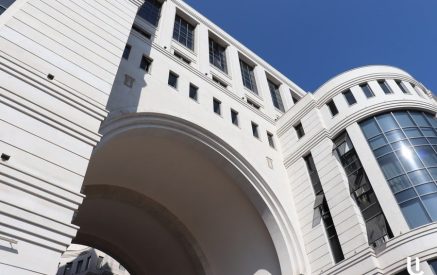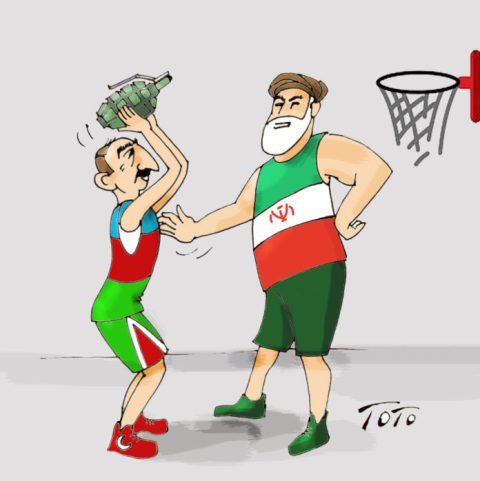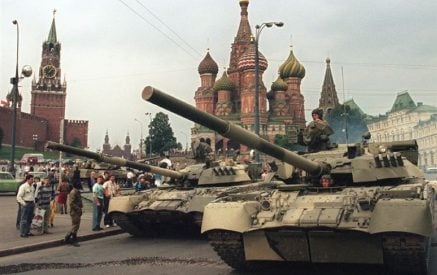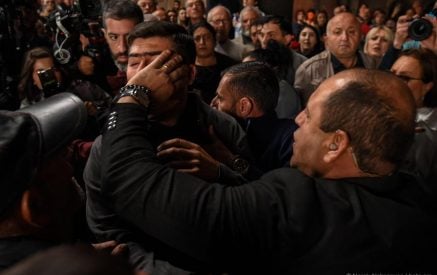The Armenian Mirror-Spectator.
The cross-border rhetoric flying back and forth between Iran and Azerbaijan thus far has created a false sense of hope for Armenia.
If until now this war of words was considered political drama in the South Caucasus, the further escalation of tensions between the two major parties makes it pale in comparison in terms of scale.
In the aftermath of the 44-Day War in 2020, political developments exposed regional rivalries which use Armenia and Azerbaijan to expand zones of influence or to fight to replace an antagonist. That, of course, gives leverage to the Azerbaijani dictator to play both sides against each other and take advantage from each side.
President Ilham Aliyev travels to any capital for summit meetings. He even agrees to respect the territorial integrity of Armenia and negotiate in good faith to sign a peace treaty, only to bomb Armenia’s borders the next day and to raise the issue of the “Zangezur Corridor” to return the situation back to square one.
Read also
The next summit between Armenian Premier Nikol Pashinyan and Aliyev had been planned to take place on December 7 in Brussels, with the participation of European Union President Charles Michel and French President Emmanuel Macron. However, Mr. Aliyev this week announced his refusal to participate, citing as the reason the presence of Mr. Macron, whom he considers to be pro-Armenian and thus not an independent broker. In addition, behind this resentment lies the recent overwhelmingly one-sided vote in the French Senate, which calls on Azerbaijan to stop its aggression against Armenia and redress all the consequences of that aggression.
Macron’s participation in that planned meeting was not necessarily a Pashinyan prerequisite but it was based on an agreement reached in Prague to continue the negotiations in the same format.
But this time around, he was more explicit, laying out a demand on Iran’s sovereign territory. Ethnic Azerbaijanis in Iran have never given up their identity and have always stated that they have brethren living in a sovereign state called Azerbaijan. Iran’s historical aspiration has been to absorb that minority. But it turns out Mr. Aliyev has a bigger appetite and he believes the small fish can swallow the big one — Azerbaijan has a population of 8 million and according to an estimate, there are anywhere between 20 to 25 million ethnic Azerbaijanis in Iran, though not all are in the province.
President Aliyev could never have dared to make such a claim if he were not backed by a larger configuration of forces which have an ax to grind with the Islamic Republic of Iran.
Last week, during the conference titled “Along the Middle Corridor” in Baku, Aliyev launched an unprecedented attack against Iran, stating that his government would do its “best to preserve our secular lifestyle … as well as Azerbaijanis living in Iran,” whom he considered “part of our people.”
Then he continued his diatribe: “We worked with three presidents of Iran, [Mohammad] Khatami, [Mahmoud] Ahmadinejad and [Hassan] Rouhani. For all these years, there was no similar situation. Never has Iran had two [military] exercises near our borders, within a few months. There has never been such hateful and threatening statements against Azerbaijan.”
“Hateful” statements refer to President Raisi’s warnings against border changes in the region. Aliyev, putting on a brave face, stated: “We are not afraid of Iran.” Of course, earlier he had boasted that Azerbaijan’s army is “also Turkey’s army,” indicating that Turkey will back Azerbaijan unconditionally as it did during the 44-Day War against Armenia. That nation’s army is one of the largest in the world, ranked 13th globally.
Incidentally, while Armenia is struggling to adopt a military doctrine and build up its defense forces, Turkey has helped Azerbaijan to restructure its armed forces along NATO standards.
Aliyev’s new and daring belligerence will be understood when it is placed in proper context. Thus, recently Mahmudali Chehregani, the leader of the “South Azerbaijan National Awakening Movement, thus far banned in Azerbaijan and living in Washington, suddenly appeared on Azerbaijan’s state TV on November 4 and promised to end the “Persian fascist mullah regime.” He has also criticized relations between Iran and Armenia, calling the latter “an enemy of Azerbaijan.”
When an exile political operative living in Washington comes out of mothballs and joins his former enemies, it means there is a collusion of forces for a common cause.
Another development is the return to power in Israel of Benjamin Netanyahu, a hawk fixated on Iran or rather its destruction. With the Biden administration new initiatives, negotiations on Iran’s ratification of the nuclear treaty had started and the participants were believed to be on the verge of a breakthrough but it was delayed by a visit of Israeli parliamentary delegation to Washington. Pundits in the West believe that Iran’s intransigence also helped to derail it and boost Netanyahu’s chances to return to power. Once he settles in the seat of power, Netanyahu will push for a direct strike on Iran’s nuclear facilities and the administration in Washington will reluctantly support the plan. US State Department Spokesman Ned Price has already indicated that the US will be supporting Azerbaijan in case of a war between Iran and the latter.
This columnist has always maintained that the Iran-Israel controversy is not an isolated case; it is part and parcel of a broader plan, the Arab Spring, which had promised to promote democracy and human rights in Middle Eastern countries ruled by dictators.
Iraq, Libya and Syria were on the butcher block to be destroyed. Libya had the most egalitarian regime in the Middle East, ruled by an eccentric dictator. Iraq was strong and prosperous while Syria was the breadbasket of the Middle East. All these countries now lie in ruins, still waiting for democracy. The planners of the Arab Spring had already figured the current state of affairs when they intentionally misnamed it.
Iran was also part of that plan but its time had not arrived yet.
All the movements start with an internal explosion to create a “need” for foreign intervention. Now, demonstrations have started in Iran, and the Iranian Kurds are being offered armaments to smuggle into the country. Therefore, it seems the stage is set for another chapter of the Arab Spring saga. The ministers of defense of Turkey and Israel had met in Baku in September, joined also by the Saudi Arabian foreign minister. After Baku, they met again in Ankara, most probably to prepare the stage for another “incident.”
It is not uncommon to start a war in one part of the globe when the world is engulfed already in another major conflagration.
Was it a coincidence that the Hungarian uprising against Soviet rule took place almost simultaneously with the Suez Crisis? Indeed the Hungarian uprising took place October 23-November 11, 1956 and the tripartite Suez War October 29 to November 7, 1956.
It does not take too much of an imagination to correlate the two cases to each other, when you find out that the same planners have been active behind the scenes.
The noose is being tightened around Iran and if this goes too far, Armenia’s case will be marginalized in the ensuing melee.
Edmond Y. Azadian

























































